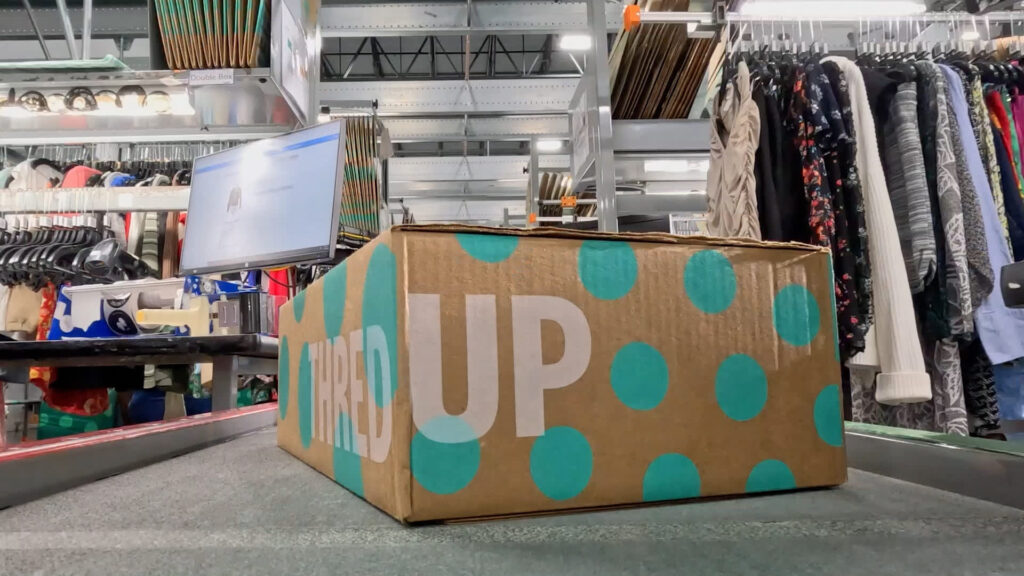At ThredUp‘s 600,000-square-foot warehouse in Suwanee, Georgia, roughly 40,000 pieces of used clothing are processed each day. The company’s logistics network — four facilities across the U.S. — now rivals that of some fast-fashion giants.
“This is the largest garment-on-hanger system in the world,” said Justin Pina, ThredUp’s senior director of operations. “We can hold more than 3.5 million items here.”
Secondhand shopping is booming. The global secondhand apparel market is expected to reach $367 billion by 2029, growing almost three times faster than the overall apparel market, according to GlobalData.
President Donald Trump’s tariffs were billed as a way to bring manufacturing back home. But the measures hit one of America’s most import-dependent industries: fashion.
About 97 percent of clothing sold in the U.S. is imported, mostly from China, Vietnam, Bangladesh and India, according to the American Apparel and Footwear Association.
For years, Gen Z shoppers have been driving the rise of secondhand fashion, but now more Americans are catching on.
“When tariffs raise those costs, resale platforms suddenly look like the smart buy. This isn’t just a fad,” said Jasmine Enberg, co-CEO of Scalable. “Tariffs are accelerating trends that were already reshaping the way Americans shop.”
For James Reinhart, ThredUp’s CEO, the company is already seeing it play out.
“The business is free-cash-flow positive and growing double digits,” said Reinhart. “We feel really good about the economics, gross margins near 80% and operations built entirely within the U.S.”
ThredUp reported that revenue grew 34% year over year in the third quarter. The company also said it acquired more new customers in the quarter than at any other time in its history, with new buyer growth up 54% from the same period last year.
“If tariffs add 20% to 30% to retail prices, that’s a huge advantage for resale,” said Dylan Carden, research analyst at William Blair & Company. “Pre-owned items aren’t subject to those duties, so demand naturally shifts.”
Inside the ThredUp warehouse, where CNBC got a behind-the-scenes look. automation hums alongside human workers. AI systems photograph, categorize, and price thousands of garments per hour. For Reinhart, the technology is key to scaling resale like retail.
“AI has really accelerated adoption,” said Reinhart. “It’s helping us improve discovery, styling, and personalization for buyers.”
That tech wave extends beyond ThredUp. Fashion-tech startups Phia, co-founded by Phoebe Gates and Sophia Kianni, is using AI to scan thousands of listings across retail and resale in seconds.
“The fact that we’ve driven millions in transaction volume shows how big this need is,” Gates said. “People want smarter, cheaper ways to shop.”
ThredUp is betting that domestic infrastructure, automation, and AI will keep it ahead of the curve, and that tariffs meant to revive U.S. manufacturing could end up powering a new kind of American fashion economy.
“The future of fashion will be more sustainable than it is today,” said Reinhart. “And secondhand will be at the center of it.”
Watch the video to learn more.
https://www.cnbc.com/2025/11/15/why-thredup-and-the-secondhand-retail-market-is-booming-in-the-us.html


